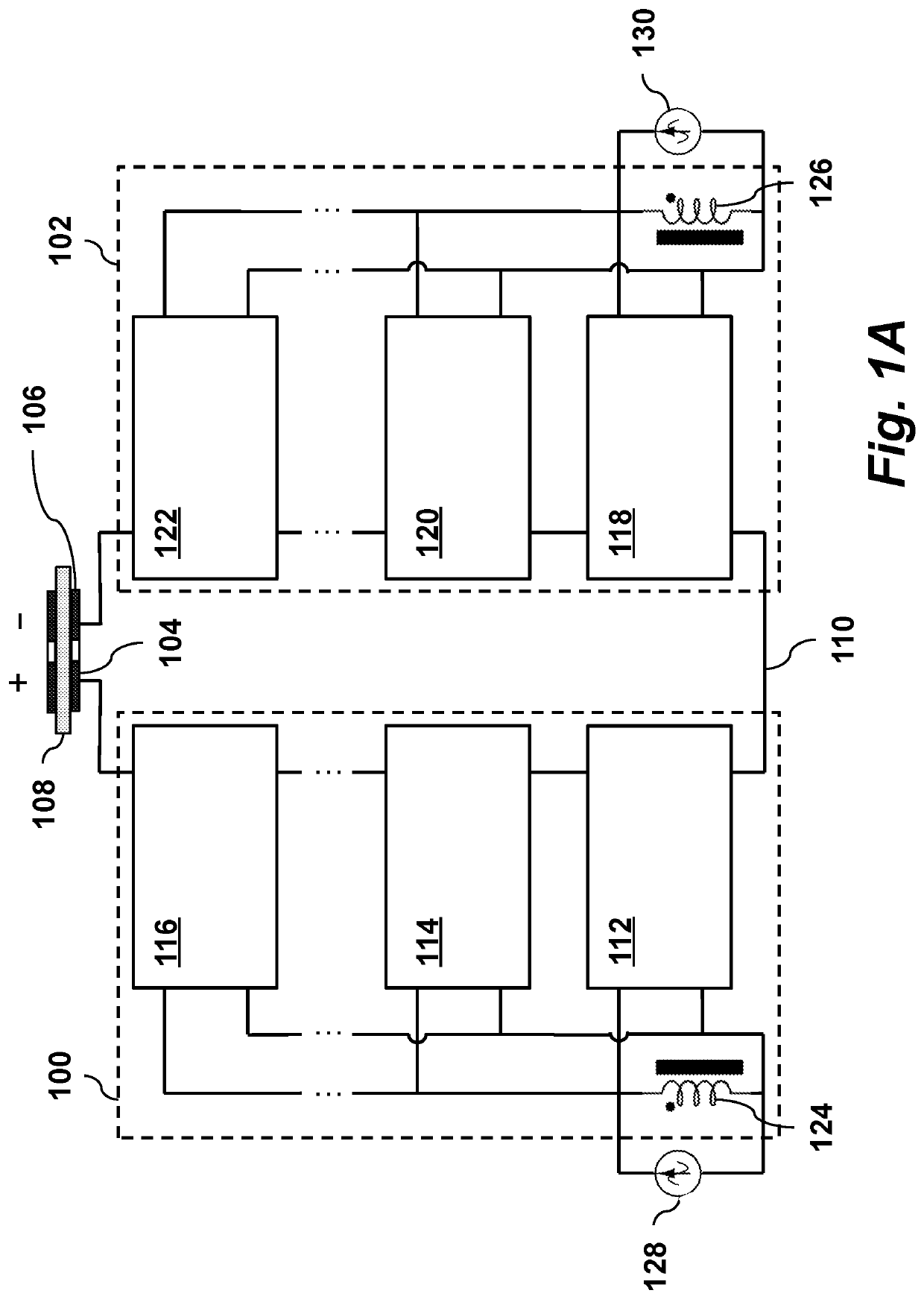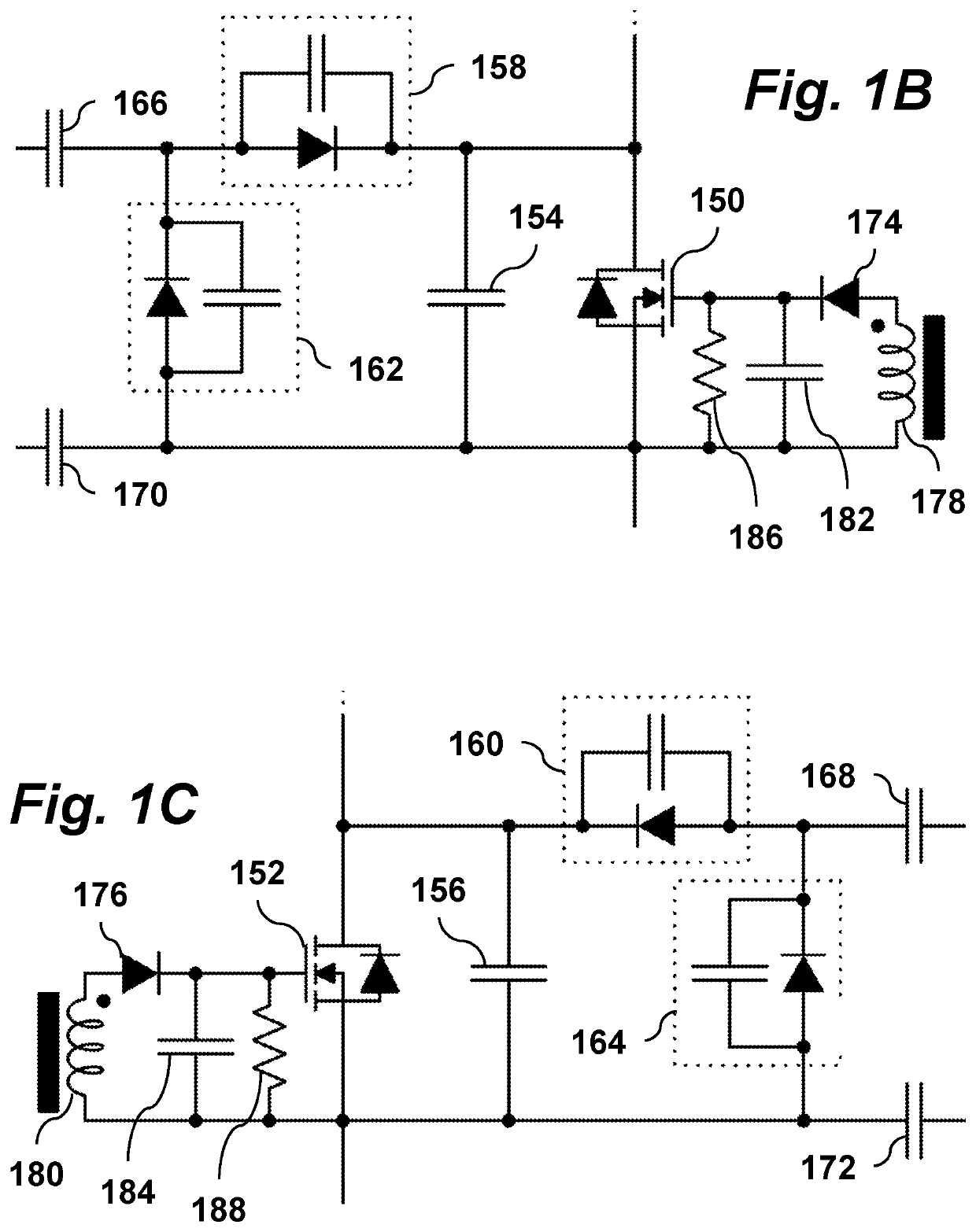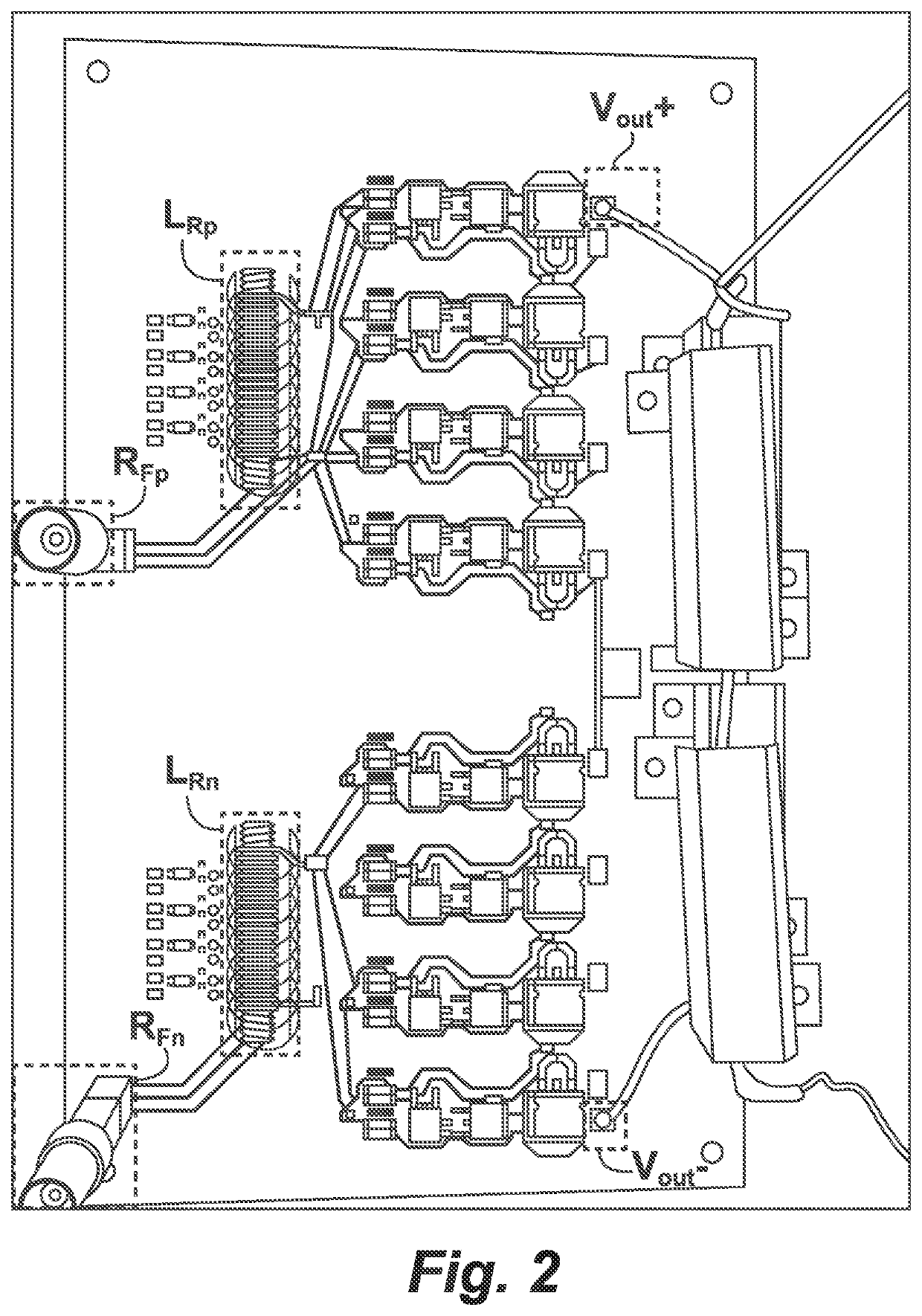Bipolar DC-DC converter topology using passive voltage reversal
a dc-dc converter and passive voltage reversal technology, applied in the direction of pulse technique, process and machine control, instruments, etc., can solve the problems of limiting the life of the electrode, slow startup, and inconvenient dc electrical pulse providing conventional approaches, etc., to achieve fast and precise operation, reduce the size of the energy storage device in the circuit, and fast transient response
- Summary
- Abstract
- Description
- Claims
- Application Information
AI Technical Summary
Benefits of technology
Problems solved by technology
Method used
Image
Examples
Embodiment Construction
[0021]FIG. 1A depicts the general structure of the resonant rectifier schematic developed to generate the bipolar pulses for electroporation, according to one embodiment of the invention.
[0022]The circuit includes two opposing multi-level isolated rectifiers, left multi-level resonant rectifier bank 100 and right multi-level resonant rectifier bank 102. These are connected to positive and negative electrodes 104 and 106, respectively. For purposes of illustration, the load 108 contacting the electrodes in this figure is a treated liquid for electroporation. The low level of the rectifier banks are tied together to a common node 110. When the left side rectifier is active, the load will experience a positive voltage and when the right side is active the load will experience a negative voltage.
[0023]Through capacitive isolation, each rectifier bank may have multiple stages to achieve impedance matching and voltage gain. As shown, left rectifier bank 100 has multiple resonant rectifier...
PUM
 Login to View More
Login to View More Abstract
Description
Claims
Application Information
 Login to View More
Login to View More - R&D
- Intellectual Property
- Life Sciences
- Materials
- Tech Scout
- Unparalleled Data Quality
- Higher Quality Content
- 60% Fewer Hallucinations
Browse by: Latest US Patents, China's latest patents, Technical Efficacy Thesaurus, Application Domain, Technology Topic, Popular Technical Reports.
© 2025 PatSnap. All rights reserved.Legal|Privacy policy|Modern Slavery Act Transparency Statement|Sitemap|About US| Contact US: help@patsnap.com



